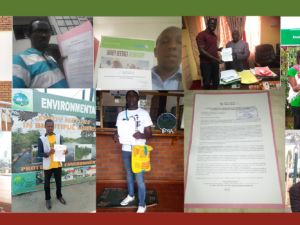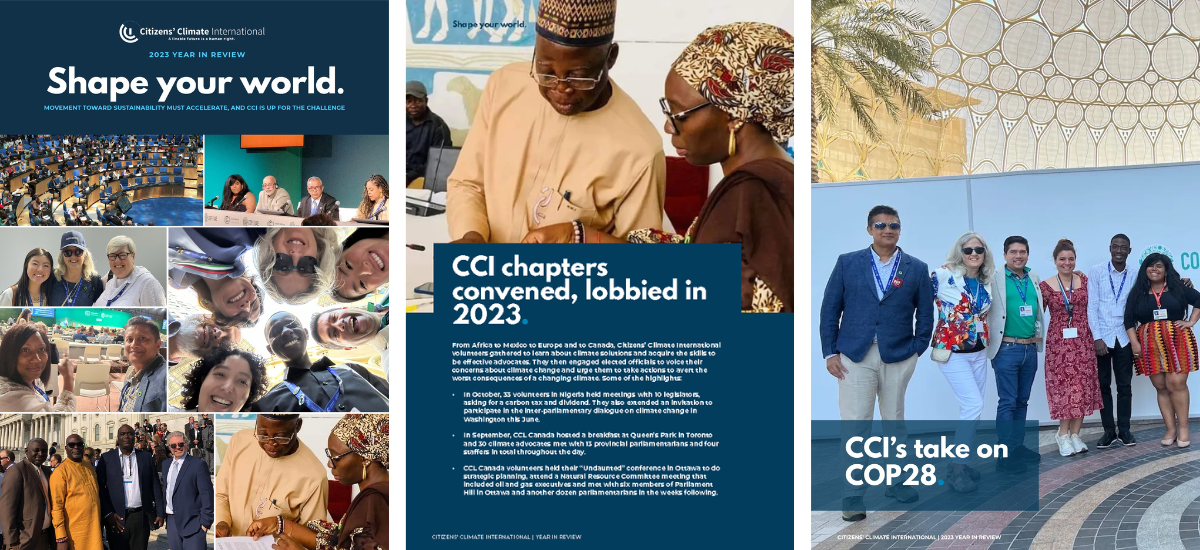Promoting Canada’s Carbon Pricing Challenge at COP28
by CCL France president, Marin Chaveyriat
Attending COP 28 was a great opportunity for me to create connections with climate leaders from France and to talk about carbon pricing with people from around the world.
I was able to attend the first week. When arriving on site, I had to decide what to do with my time. Most COP action happens in negotiation rooms, but this isn’t something I could directly act upon. Moreover, dedicated experts and NGOs are already following the negotiations and providing a synthesis at the end of the COP.
Where else could I go? In the Blue Zone, most countries have offices where their delegation (composed of negotiators, ministry members and climate experts) meetup and rest between negotiations sessions. One can easily go and knock to discuss with them quickly. This is what we did with James Collis, CCL Europe lead, back in COP 26 in Glasgow.
But how to approach the subject of carbon pricing? That’s where Canada’s Global Carbon Pricing Challenge (GCPC) enters. Canada is the first G20 country to put a price on carbon on 80% of its domestic emissions, and to return the revenus back directly to its citizens. However, Canada won’t solve climate change alone, so its government is calling other countries to adopt carbon pricing to reduce their emissions. The aim of the Challenge is to reach a carbon pricing coverage of 60% of global greenhouse gas emissions by 2030 (the coverage is 23% in 2023).
So, I wrote a brochure describing the GCPC and delivered it to offices. I focused on countries gathering 3 criterias:
- Had already implemented carbon pricing policies (at the national or subnational level) or were scheduled to;
- Had an office room in the COP 28;
- Had not joined the GCPC.
In total, 17 countries were satisfying those criteria: Australia, Brazil, China, Colombia, India, Indonesia, Japan, Kenya, Malaysia, Morocco, Singapore, South Africa, Switzerland, Thailand, Turkey, Ukraine and USA. This excludes European countries since the UE as a whole had joined the Challenge one week before COP 28.
With Alba Peña, CCL Mexico lead, we managed to give the brochure to every office except the ones in Australia, Brazil and Malaysia.
When knocking on office doors, we were always received nicely. When done with respect and appreciation, things go well. Delegation members in the offices were interested to hear about Canada’s Challenge, and were always thankful when given the brochure.
Of course, it would have been much better to have a formal lobby meeting and have more time to create deeper connections. However, it was complicated to ask for one. There are cultural barriers, language barriers, and, more importantly, negotiators’ schedules are very, very busy during COPs. On top of that, COP outcomes do not cover carbon pricing, because it is a climate policy decided at the national level, and the UN cannot overpass a country’s sovereignty. So the negotiators were already really busy with other, supranational climate subjects.
Delivering this brochure and talking about Canada’s Challenge inside countries’ offices is, I believe, one of the most effective actions we could take to build momentum for carbon pricing at COP 28.











